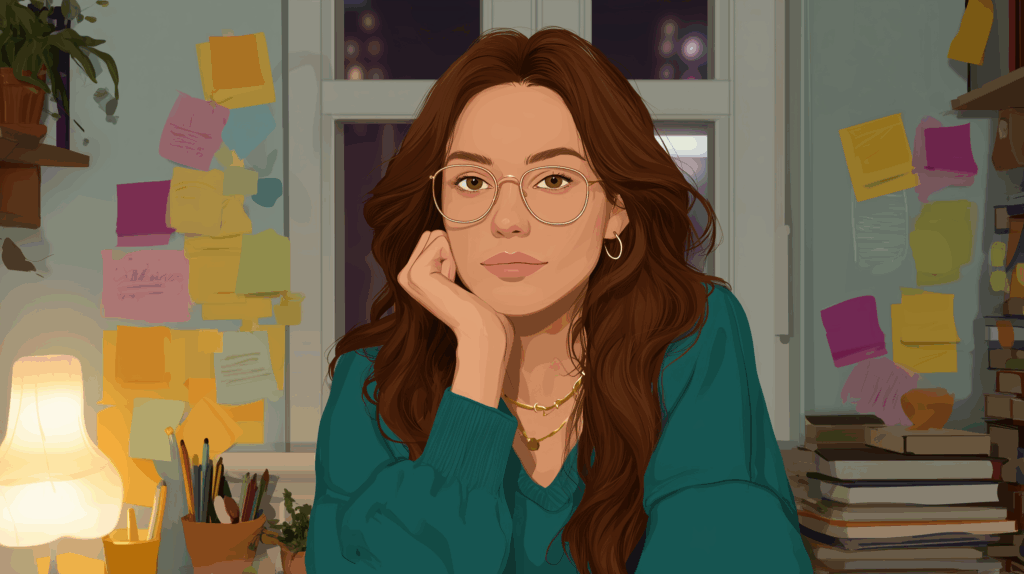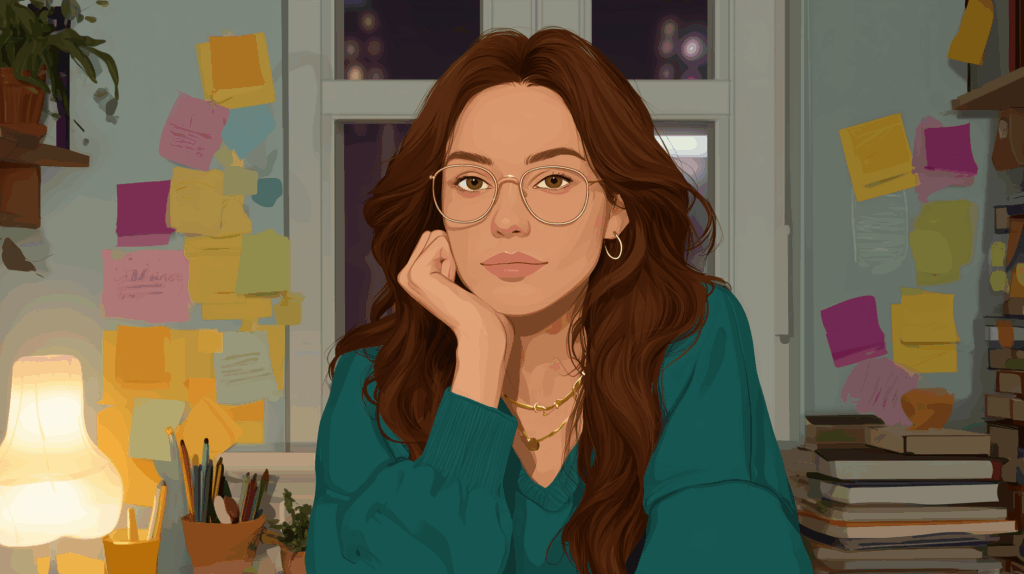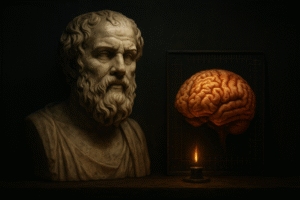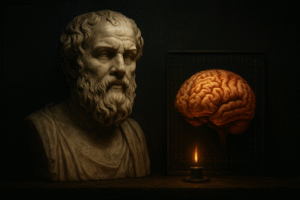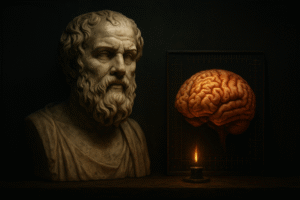The Persistence of the Suffering Artist Myth
The idea of the “suffering artist” is as old as it is powerful. Rooted in Romanticism, figures like Lord Byron and other poets turned self-destruction into a symbol of genius, reflecting philosopher Friedrich Nietzsche’s view of creation through struggle and chaos. At the time, living intensely and dying young was seen as a necessary sacrifice to achieve divine inspiration.
Today, this myth still resonates in various forms. Many creators believe that artistic depth comes at a high price: sleepless nights, neglect of mental health, and even addictions. This belief somewhat mirrors Nietzsche’s Dionysian concept, where art is born from chaos. Yet we often forget that the Apollonian — order and harmony — also plays an essential role. Does this vision still make sense in today’s world? Or can we create from a new perspective, where health and balance become sources of inspiration?
Rediscovering the Divine Within Ourselves
Over time, we realize that the connection to the divine — or to our creative source — doesn’t require suffering. As Carl Jung suggested, the divine can be understood as a manifestation of the collective unconscious, a reservoir of inner wisdom accessible to all. This idea leads us to recognize that inspiration doesn’t come solely from chaos but also from the harmony between our conscious psyche and our deeper intuition. There’s no need to seek it in extremes or self-destruction because it already resides within us.
True creation doesn’t only arise from chaos but also from serenity. By silencing external noise — societal pressures, limiting beliefs, patterns of comparison — we find an inner space of connection. This can be achieved through practices like meditation, which reduces intrusive thoughts, or simple moments of disconnection, such as walking in nature without electronic devices. These experiences help us reconnect with our intuition and create with greater authenticity. In that silence, we can hear our intuition, the voice that guides our most genuine choices.
Artists like Marina Abramović show that it’s possible to explore deep and even uncomfortable themes without being consumed by pain. In her performance The Artist is Present, Abramović uses silence and direct connection with the audience to create an intense experience rooted in presence and emotional balance, proving that depth doesn’t need to stem from suffering but from the ability to be fully present in the moment. Her disciplined and intuitive approach demonstrates that creating from a place of balance and presence is entirely possible.
Silencing the Noise and Listening to Intuition
Conscious creation begins when we can silence the noise around us and, more importantly, within us. In a world full of distractions, this practice requires effort, but its impact is transformative.
Rebeca Saray, an artist and mentor I deeply admire, exemplifies how the creative process can be a form of meditation and healing. Her art reflects not just technical skill but profound self-awareness, showing that conscious creation is a journey of internal transformation that manifests in what we share with the world.
Helio Couto also invites us to understand the impact of our vibrational frequencies on creation. He argues that by raising our vibration through practices like positive visualization and alignment with our purpose, we tune into a purer and more powerful creative flow. For Helio, creation is a direct reflection of the energy we carry: the higher the frequency, the more connected we are to the universe’s abundance and limitless potential. He emphasizes that this doesn’t mean avoiding challenges but facing them with a more conscious and aligned perspective, transforming them into fuel for creativity.
Creating from Wholeness and Health
Creating from a place of peace doesn’t mean losing intensity or authenticity. On the contrary, it’s in this state that we find clarity to express the deepest truths of our essence. Artists like Claude Monet, for example, found inspiration in the serenity of his gardens in Giverny, translating the tranquility and harmony of nature into timeless works. This example shows how inner peace can be a powerful catalyst for authentic creation.
Elizabeth Gilbert, author of Big Magic, argues that creativity doesn’t need to stem from suffering. For her, inspiration is a dialogue with life, something that flows when we are open and connected. In her book, she mentions that creativity “loves play and lightness,” and that fear should never be the captain of our creative journey. Creating from this space is liberating because it allows us to approach the process with curiosity rather than pressure, leading to art that builds instead of destroys.
An Invitation to All Creators
This is a call to all creators: artists, entrepreneurs, educators, or anyone who wishes to transform their reality. Let’s abandon the belief that suffering is the only path to creating something meaningful. Draw inspiration from examples like Marina Abramović and Claude Monet, who show that presence and serenity are inexhaustible sources of creation. Reflect on the words of Elizabeth Gilbert and Helio Couto, who remind us of the importance of aligning our energy and intention with a greater purpose.
May we rediscover our divine spark and let it guide us toward more conscious, healthy, and true creation. Creating from wholeness doesn’t mean renouncing depth but embracing a transformative process that allows us to flourish and share our authentic essence with the world.
Poem: Creating Without Suffering
Within me, the divine is already born,
I don’t need to search or lose myself,
it’s in peace where the whisper is heard,
it’s in light where I choose to live.
Each stroke is a gentle reflection
of a universe dwelling within my being,
no longer from chaos, nor enslaving pain,
but from the spark that chooses to grow.
Final Reflections
- “True art doesn’t require the sacrifice of body or mind; it flourishes when we are at peace with ourselves.” — Márcia Do Vales
- “The divine already dwells within us, waiting for us to silence the external noise to hear the creative voice of our essence.” — Márcia Do Vales
- “Creating from suffering is an act of resistance, but creating from peace is an act of transformation.” — Márcia Do Vales
- “The artist who finds strength in their own light abandons the myth of suffering and reveals the beauty of conscious creation.” — Márcia Do Vales
- “Creative power doesn’t arise from the chaos that destroys us but from the serenity that elevates us.” — Márcia Do Vales
I hope this text inspires you to create from a place of connection and health. Share your thoughts and experiences with conscious creation in the comments. Let’s transform the way we see and live art together!
